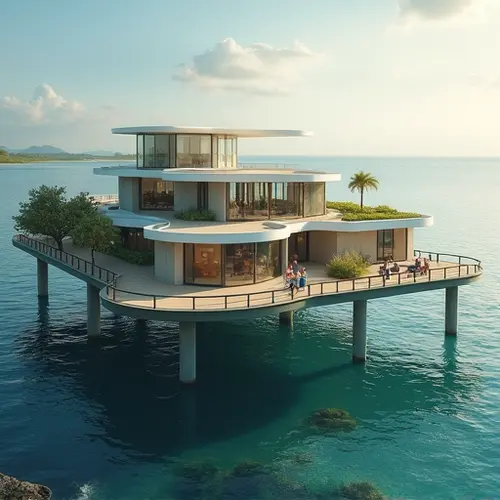
The Rise of Floating Cities
As sea levels threaten coastal communities worldwide, floating cities are transitioning from sci-fi fantasy to tangible reality. Satellite imagery reveals rapid construction progress on the Maldives Floating City – the world's first fully functional ocean community just minutes from Male. Designed by Dutch architects Waterstudio, this hexagonal grid of 5,000 floating homes resembles brain coral when viewed from above.
Engineering Against Rising Tides
The $250,000 starter homes sit atop concrete pontoons anchored to the seabed, allowing structures to rise with sea levels. A protective ring of artificial barrier islands buffers waves while preserving coral reefs. "We cannot stop the waves, but we can rise with them," says former Maldivian President Mohamed Nasheed, highlighting how this project addresses existential threats facing the world's lowest-lying nation.
Global Projects Taking Shape
Beyond the Maldives, South Korea's Busan is developing a UN-backed floating district scheduled for completion this year. Meanwhile, the Oceanix project envisions modular neighborhoods that could eventually expand into 10,000-person communities. These developments use solar power, rainwater harvesting, and zero-waste systems to minimize environmental impact.
Challenges and Innovations
Engineering hurdles include storm resistance and infrastructure connectivity. Dutch firm Blue21 pioneers triple-layer platforms combining housing, utilities, and recreation spaces. "The technology exists," explains marine architect Koen Olthuis. "What we're perfecting is scaling it affordably while ensuring marine ecosystems thrive beneath us."
The Future of Coastal Living
With NASA predicting 80% of the Maldives could be uninhabitable by 2050, these aquatic settlements offer more than novelty – they provide climate resilience. As construction accelerates globally, floating cities may soon transform from experimental enclaves to mainstream housing solutions for vulnerable coastal populations.

 Nederlands
Nederlands
 English
English
 Deutsch
Deutsch
 Français
Français
 Español
Español
 Português
Português